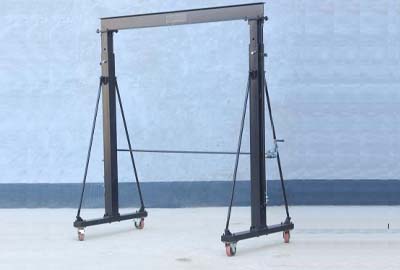Mar . 05, 2025 06:23
Back to list
moving heavy equipment with rollers
Moving heavy equipment is a task that requires precision, expertise, and the right tools to ensure safety and efficiency. One of the most effective methods in the industry is using rollers. These tools not only simplify the process but also safeguard both the equipment and the personnel involved. Here’s a deep dive into the best practices, insights, and expert recommendations for moving heavy equipment with rollers.
Once the plan is in place, deploy the correct techniques for placing and maneuvering the rollers. Start by lifting the equipment using appropriate lifting tools, like jacks or cranes, in a controlled manner. Place the rollers beneath the equipment, ensuring they are aligned in the direction of the intended movement. It is often beneficial to use a gradual incline when lifting with jacks to avoid sudden shifts which can cause damage or injury. When moving the equipment, maintain a steady pace. Quick or abrupt movements can cause rollers to slip or equipment to topple, posing significant safety risks. Utilize controlling ropes or bars to guide the equipment precisely along the intended path. It is advisable to have individuals spaced at strategic points around the equipment to observe movement and ensure continuous safe handling. Safety Precautions and Professional Expertise Safety cannot be overstated. Equip all team members with protective gear such as gloves, helmets, and safety boots. Conduct a safety briefing before beginning the move, highlighting specific risks and how to mitigate them. Encouraging a safety-first culture ensures that every individual understands the importance of following protocols. Engaging professionals with expertise in moving heavy equipment can significantly mitigate risks. These experts not only provide experience and assurance but also possess an in-depth understanding of regulations, equipment specifications, and advanced techniques. Their involvement can be particularly beneficial for large-scale or complex projects where precision and care are paramount. Continuous Learning and Adaptation The realm of equipment transportation continually evolves, with new technologies and methods emerging. Staying abreast of industry developments can enhance efficiency and safety. Training sessions, workshops, and seminars provide opportunities to learn cutting-edge techniques and share experiences with peers. Embracing this continuous learning culture is integral for individuals and companies aiming to excel in the field. Moving heavy equipment with rollers involves more than just physical strength. It demands a strategic approach, the right equipment, and an unwavering commitment to safety and efficiency. By focusing on each step of the process, from planning to execution, businesses can achieve a seamless and successful transition with minimal risk.


Once the plan is in place, deploy the correct techniques for placing and maneuvering the rollers. Start by lifting the equipment using appropriate lifting tools, like jacks or cranes, in a controlled manner. Place the rollers beneath the equipment, ensuring they are aligned in the direction of the intended movement. It is often beneficial to use a gradual incline when lifting with jacks to avoid sudden shifts which can cause damage or injury. When moving the equipment, maintain a steady pace. Quick or abrupt movements can cause rollers to slip or equipment to topple, posing significant safety risks. Utilize controlling ropes or bars to guide the equipment precisely along the intended path. It is advisable to have individuals spaced at strategic points around the equipment to observe movement and ensure continuous safe handling. Safety Precautions and Professional Expertise Safety cannot be overstated. Equip all team members with protective gear such as gloves, helmets, and safety boots. Conduct a safety briefing before beginning the move, highlighting specific risks and how to mitigate them. Encouraging a safety-first culture ensures that every individual understands the importance of following protocols. Engaging professionals with expertise in moving heavy equipment can significantly mitigate risks. These experts not only provide experience and assurance but also possess an in-depth understanding of regulations, equipment specifications, and advanced techniques. Their involvement can be particularly beneficial for large-scale or complex projects where precision and care are paramount. Continuous Learning and Adaptation The realm of equipment transportation continually evolves, with new technologies and methods emerging. Staying abreast of industry developments can enhance efficiency and safety. Training sessions, workshops, and seminars provide opportunities to learn cutting-edge techniques and share experiences with peers. Embracing this continuous learning culture is integral for individuals and companies aiming to excel in the field. Moving heavy equipment with rollers involves more than just physical strength. It demands a strategic approach, the right equipment, and an unwavering commitment to safety and efficiency. By focusing on each step of the process, from planning to execution, businesses can achieve a seamless and successful transition with minimal risk.
Latest news
-
Dawei Hand Pallet Truck 1200mm, 2000–5000 KGS Heavy-DutyNewsNov.17,2025
-
Dawei Hand Pallet Truck, Fork Length 1200mm, 2000–5000kgNewsNov.17,2025
-
Large Equipment Movers – Safe, Insured & On-Time ServiceNewsNov.17,2025
-
Machine Moving Dollies | Heavy-Duty, Low-Profile, SafeNewsNov.17,2025
-
Permanent Lifting Magnet - Heavy-Duty, Safe, Quick ReleaseNewsNov.11,2025
-
PML 1000 Lifting Magnet - Heavy-Duty, Safe, No PowerNewsNov.11,2025
-
Large Equipment Movers: Safe, Fast, Certified ProsNewsNov.11,2025
